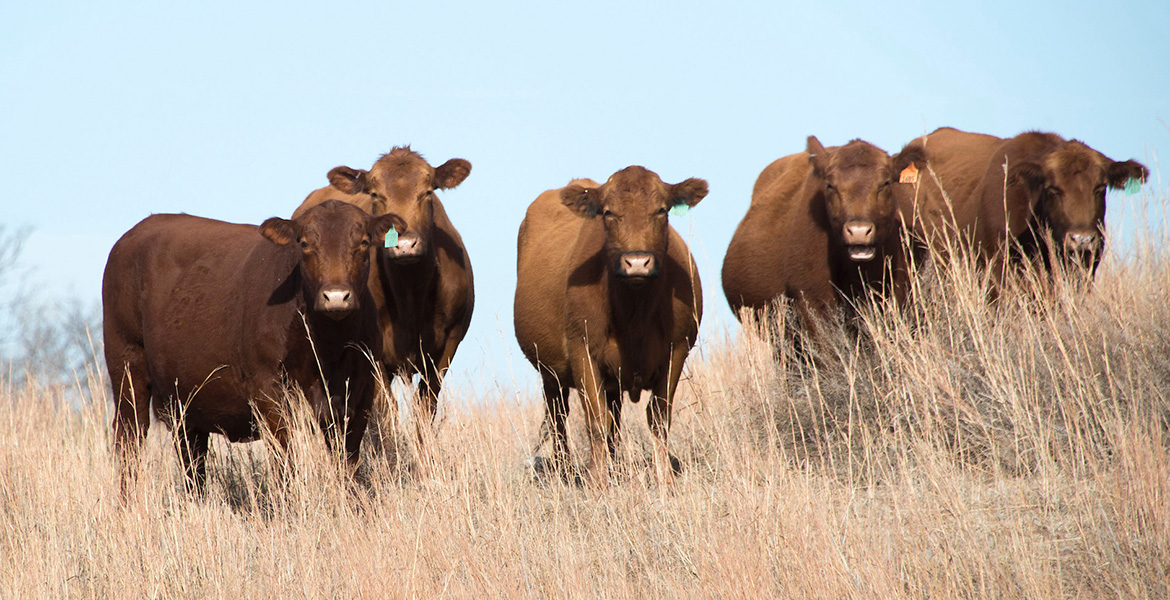
Review information about Johne’s Disease prior to calving season
Wednesday, February 3, 2021
The approaching calving season has more than a few cattle producers cautiously looking for colostrum or colostrum replacers, given what they already know about Johne’s Disease, said Oklahoma State University experts.
In many cases, it works like a game of connect-the-dots:
- Cow-calf operators realize they may have the opportunity to obtain natural colostrum from newly freshened dairy cows.
- Expert recommendations are to avoid getting the colostrum from dairies known to have had an incidence of Johne’s Disease – a contagious, chronic and often fatal infection that affects primarily the small intestine of ruminants.
- This leads to a producer review of the disease and improved awareness that can help protect a livestock operation’s integrity.
- Cattle owners may even share their refreshed knowledge with fellow producers, spreading research-based information by word of mouth, often citing news articles and other sources.
The bacterium involved is Mycobacterium avium subspecies paratuberculosis, commonly referred to as MAP. A particularly hardy microorganism, it is resistant to heat, cold, moisture and drying, and it can be found in grasses fertilized with contaminated manure.
“Johne’s is very much a herd disease, so if one animal is found ill with MAP then several more normal-appearing animals likely also are infected,” said Dr. Barry Whitworth, OSU Extension veterinarian and food animal quality and health specialist.
Most animals are infected with the Johne’s Disease early in life, but clinical symptoms typically do not appear for many months. The organism is contagious and can be transferred animal to animal within a species such as cow to cow or from one ruminant to another ruminant such as cattle to sheep. Non-ruminant species – dogs, pigs, raccoons and coyotes, as examples – also can be infected with MAP, but they usually to do not exhibit clinical signs.
In terms of cow-calf operations, calves may ingest the organism by nursing fecal contaminated teats or by nursing milk or colostrum infected with MAP. They also may ingest the organism by eating contaminated feed, grass or drinking water. One other way that calves may be infected is in the uterus of infected adults. Adults are not as easily infected as calves.
“The two most common clinical signs seen in cattle with Johne’s Disease are diarrhea and weight loss, even though animals will seem to have good appetites,” Whitworth said. “Another clinical sign that some cattle display is submandibular edema or bottle jaw, where fluid begins to leak out from the vessels. Bottle jaw is caused by low serum protein levels, which is important to maintain vessel structure in the body.”
The best way to keep Johne’s Disease out of a cattle herd is prevention. Replacement bulls and cows should be purchased from Johne’s free herds or be tested prior to introduction in the existing herd. If the disease is present in a herd, the focus should be on manure management, culling infected cattle and keeping facilities clean. Anywhere calves may be born should be clean.
Disinfectants that are labeled as tuberculocidal may be used for cleaning surfaces such as feed troughs or water troughs, said Dr. Rosslyn Biggs, OSU Extension veterinarian and director of continuing education for the university’s College of Veterinary Medicine.
“Be aware that organic material may inactivate the disinfectant, so all fecal material should be removed before its application,” she said. “Cattle need to be moved to cleaner pasture if the calving area is heavily contaminated with manure.”
Fact sheets detailing research-based information about best calving management practices are available online and through OSU Extension county offices. The U.S. Department of Agriculture has an excellent website about Johne’s Disease and covers all susceptible livestock.
MEDIA CONTACT: Donald Stotts | Agricultural Communications Services | 405-744-4079 | donald.stotts@okstate.edu
